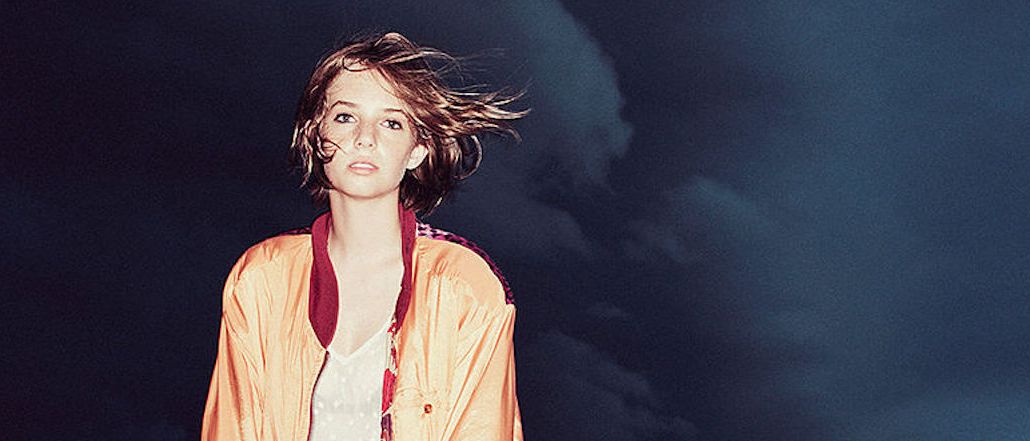Save 50% on a 3-month Digiday+ membership. Ends Dec 5.

AllSaints is expanding. This month, the London fashion brand is adding Peru to its lengthy list of international stores, which include 63 in North America, 22 in Asia and two in the Middle East.
Now that it’s wooing new customers overseas — and can deliver products to them — its biggest channel, Instagram, is acting more like a storefront for its 407,000 followers.
Last week the brand made it possible to shop for clothes directly from its Instagram page. Users who click the URL in the AllSaints Instagram bio are directed to a webpage powered by software company Olapic that replicates its feed of pictures. Clicking on a picture will direct the user to buy the item featured in said picture on the AllSaints website.
While brands in the U.S. have been offering “shoppable” Instagram pages for a while, brands in the U.K. have been slower to adopt the tech. In her time at the company, global social media manager Cass Gowing has been pushing toward this goal, for example, by only showing products that are currently in stock.
“Even when we would add the URL of a campaign to the bio, we’d see such high engagement and traffic,” she said.
In the week since the feature was added, AllSaints has seen sessions from Instagram to the AllSaints website up 54 percent on the previous week, with conversions increasing 50 percent.
Before this week, AllSaints had experimented with shoppable content during a campaign named #itsuptoyou. After asking fans to submit their pictures documenting how they style their AllSaints wardrobe, it created a street style gallery on its website — also powered by Olapic — that visitors could shop. The campaign drew 66,000 views on the site. Eighty-two percent of all users who viewed the image gallery returned to the site again.
Ad position: web_incontent_pos1
People view around six images each. “There’s a real intent to purchase here. We’re now looking at better tracking them on their journey too. Where are they going next? This will be so vital to us,” Gowing added.
The brand’s focus on street style is key as it moves to expand beyond its London roots. Under CEO William Kim, AllSaints has been shaking off the grungy, dark “uniform” associated with the capital, while moving into new areas like accessories.
And having ditched fashion week, the brand is increasingly focused on promoting style over trends. “We’re 22-years-old now. It’s about maturity. The product is a bit more grown up, and we want to have that direct relationship with consumers,” Gowing said.
Its Instagram account has pivoted to more up-close, product-focused imagery that allows customers to project their own style onto the brand. While AllSaints used to have separate accounts for its different regions, it combined them into one global hub after Instagram introduced an auto-translate feature this summer.
Ad position: web_incontent_pos2
It’s working well. According to social media analytics firm Socialbakers, U.K. fashion brands have around 15,000 followers on average, 96 percent lower than AllSaints. AllSaints’ 545,903 interactions are also above the U.K. average of 12,995, placing it fifth in the country. Its also more prolific on the channel than rivals like Cos, Zara and Reiss.
Sharing user-generated content on its main feed is one way to gain visibility in new markets. But AllSaints, which handles creative in-house, is very particular about the “aspirational” aesthetic of its Instagram feed, Gowing said.
So, rather than promoting its user-generated content on its main feed, the brand asks fans to share their outfits using campaign-specific hashtags like #itsuptoyou or the evergreen #AllSaints. Once the team has picked out their favorites, they’ll appear on its main gallery. This tactic means the site gets the traffic — lots of people check to see if they’ve made the cut — and its fan base grows. Meanwhile, the quality of the Instagram page stay “just so” for the design team.
These user-submitted images are also helping the brand’s regional teams think about how they can style and promote clothes on their turf. Influencers are useful here: While AllSaints used to work with influencers informally, it’s now ramping that up too. The brand is working alongside an agency to identify bigger names and “micro-influencers” with smaller, more dedicated followings. It picked out a selection of users who contributed to its last campaign to kick off #BikerPortraits, which launches today.
“We realized we needed to work with more influencers. For me, creating these beautiful images is more like a partnership. Our next focus is micro-influencers, as we moved our KPIs to engagement not reach. I definitely think it’s the way to go,” Gowing said.
Next, the brand is also exploring other platforms like Weibo and WeChat and looking to see how influencers can help inform its strategy on new turf. Snapchat could follow, but the brand will have to reconcile itself to the low-fi approach first.
“I don’t see us doing another user-generated content campaign after this one,” said Gowing. “It’s going to be a permanent fixture to help us grow this community.”
More in Marketing

Ulta, Best Buy and Adidas dominate AI holiday shopping mentions
The brands that are seeing the biggest boost from this shift in consumer behavior are some of the biggest retailers.

U.K. retailer Boots leads brand efforts to invest in ad creative’s data layer
For media dollars to make an impact, brands need ad creative that actually hits. More CMOs are investing in pre- and post-flight measurement.

‘AI is permeating everything we do’: How Guitar Center developed 2 AI tools this year
This summer, the company launched a chatbot called Rig Advisor to help customers find the right instruments and products.
Ad position: web_bfu





